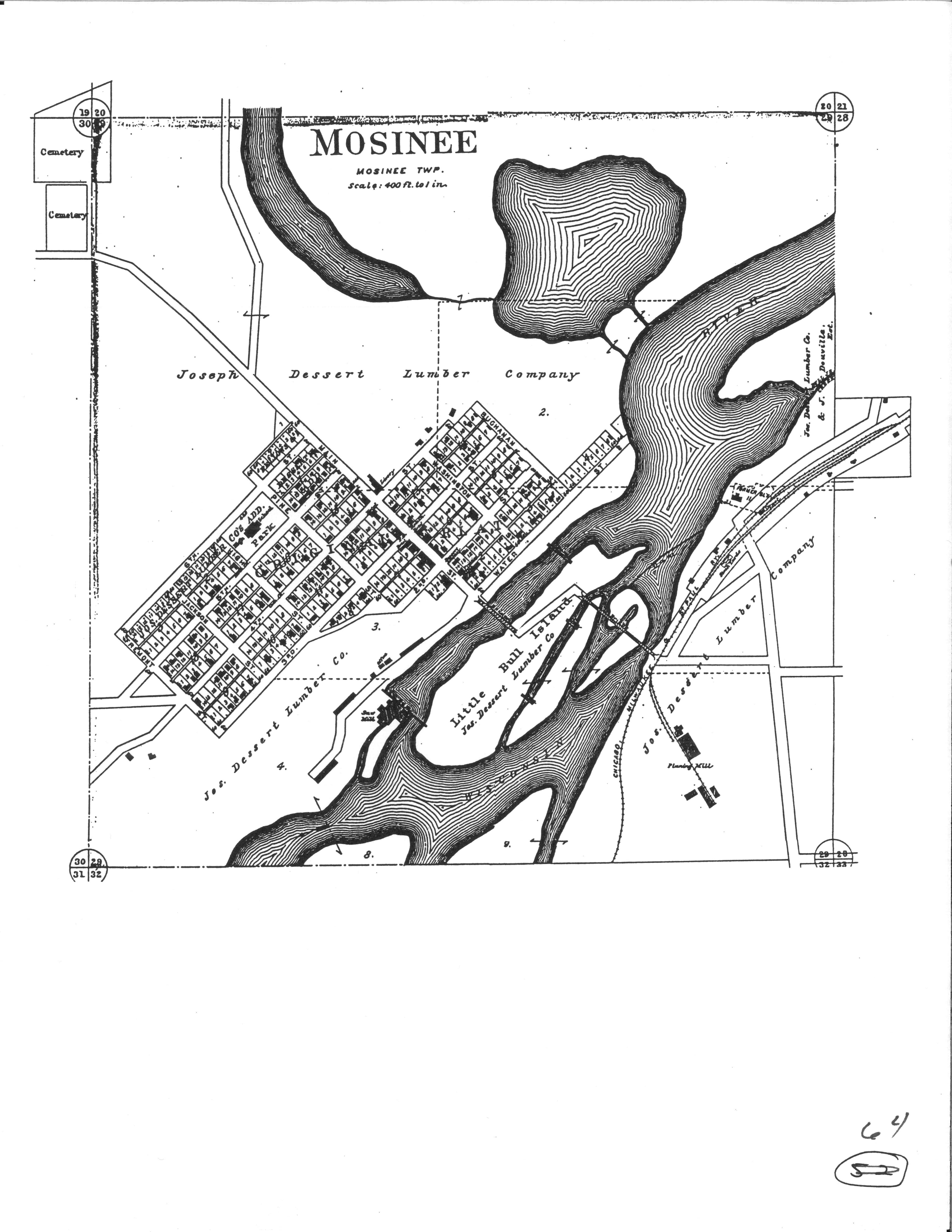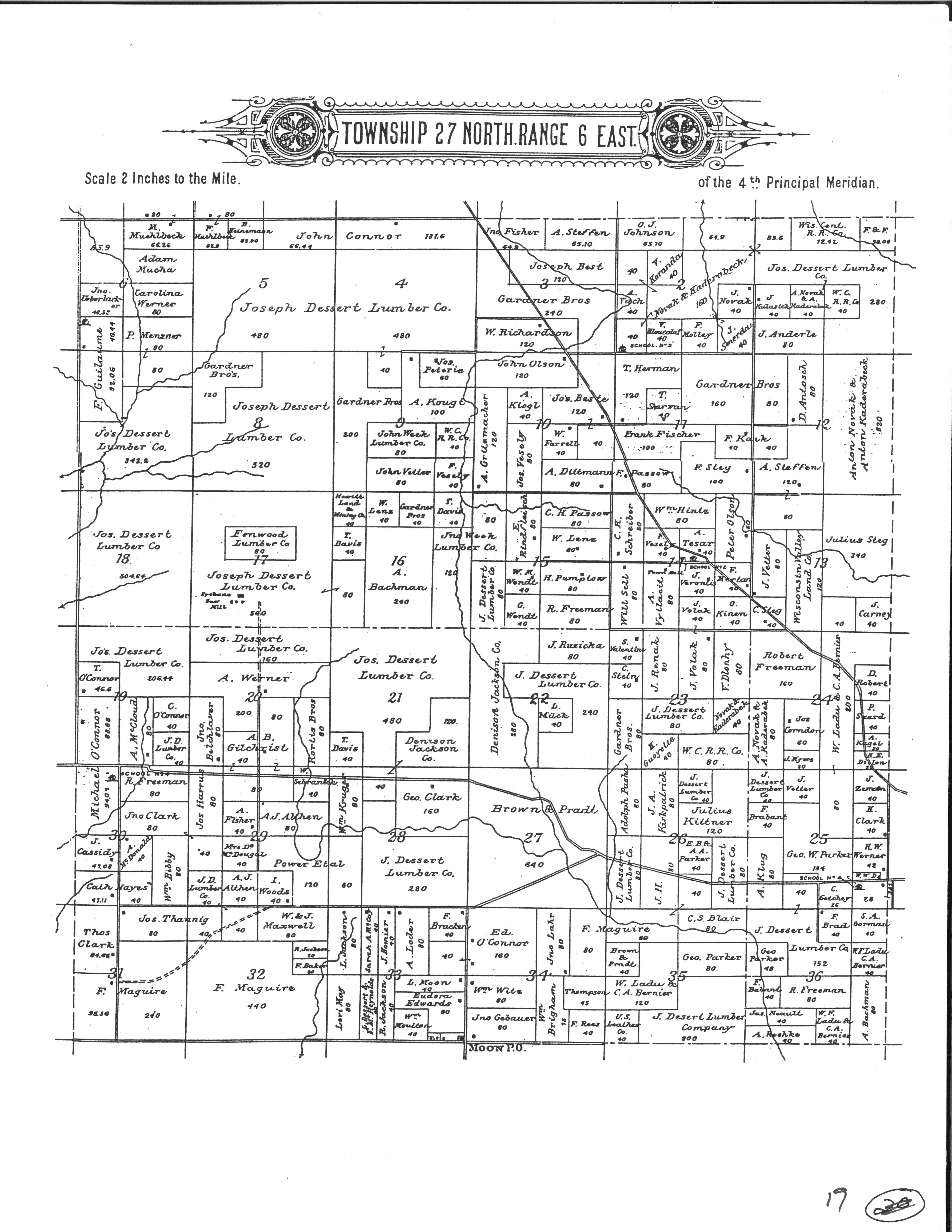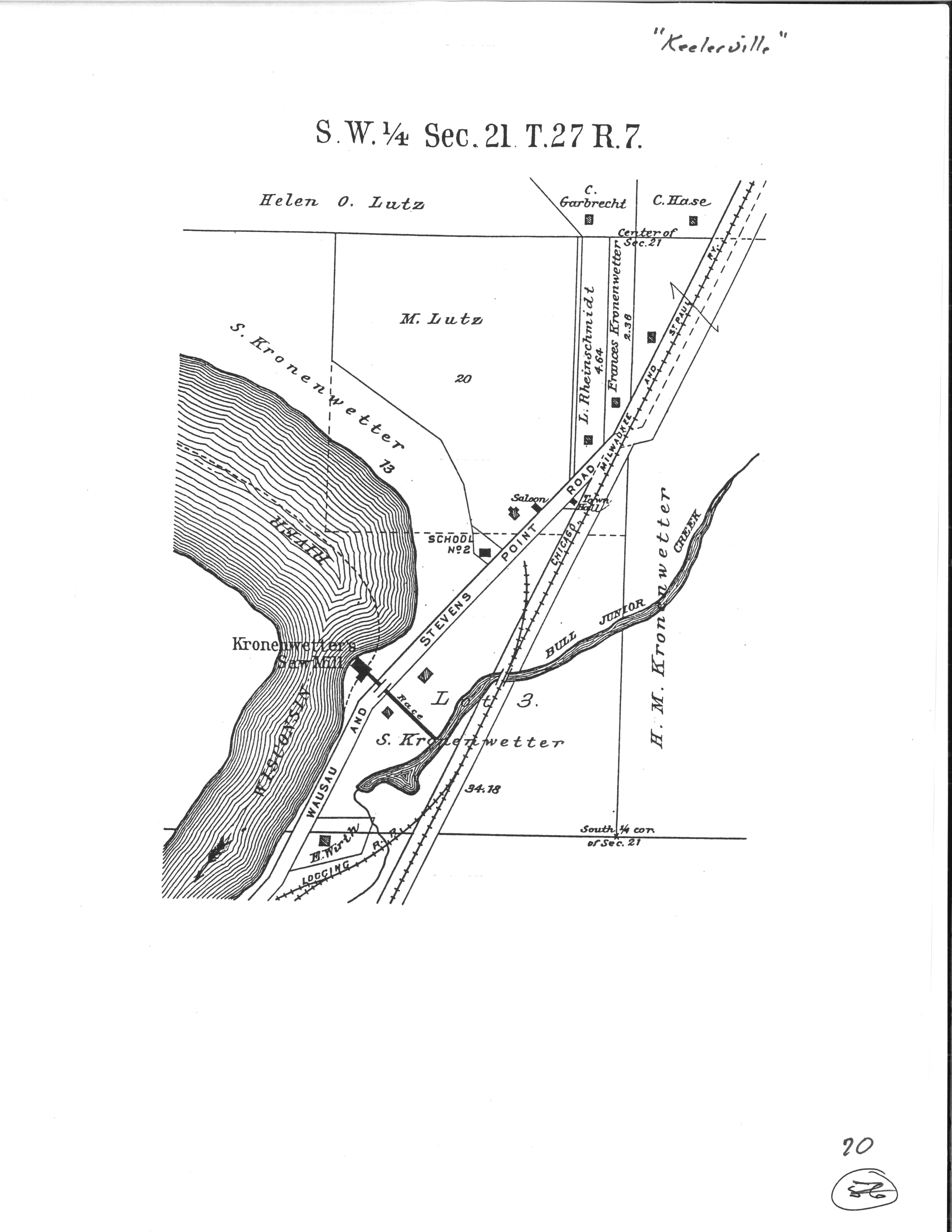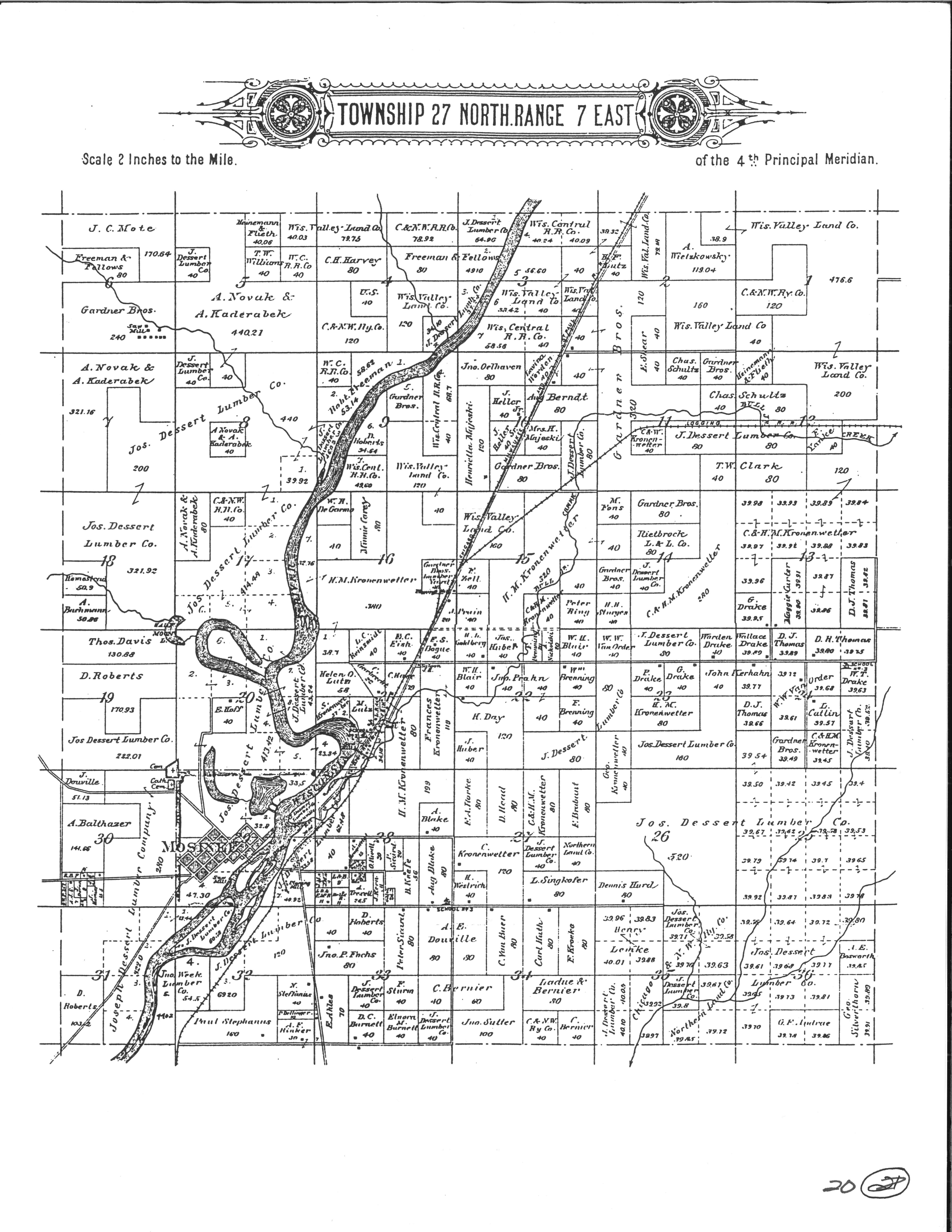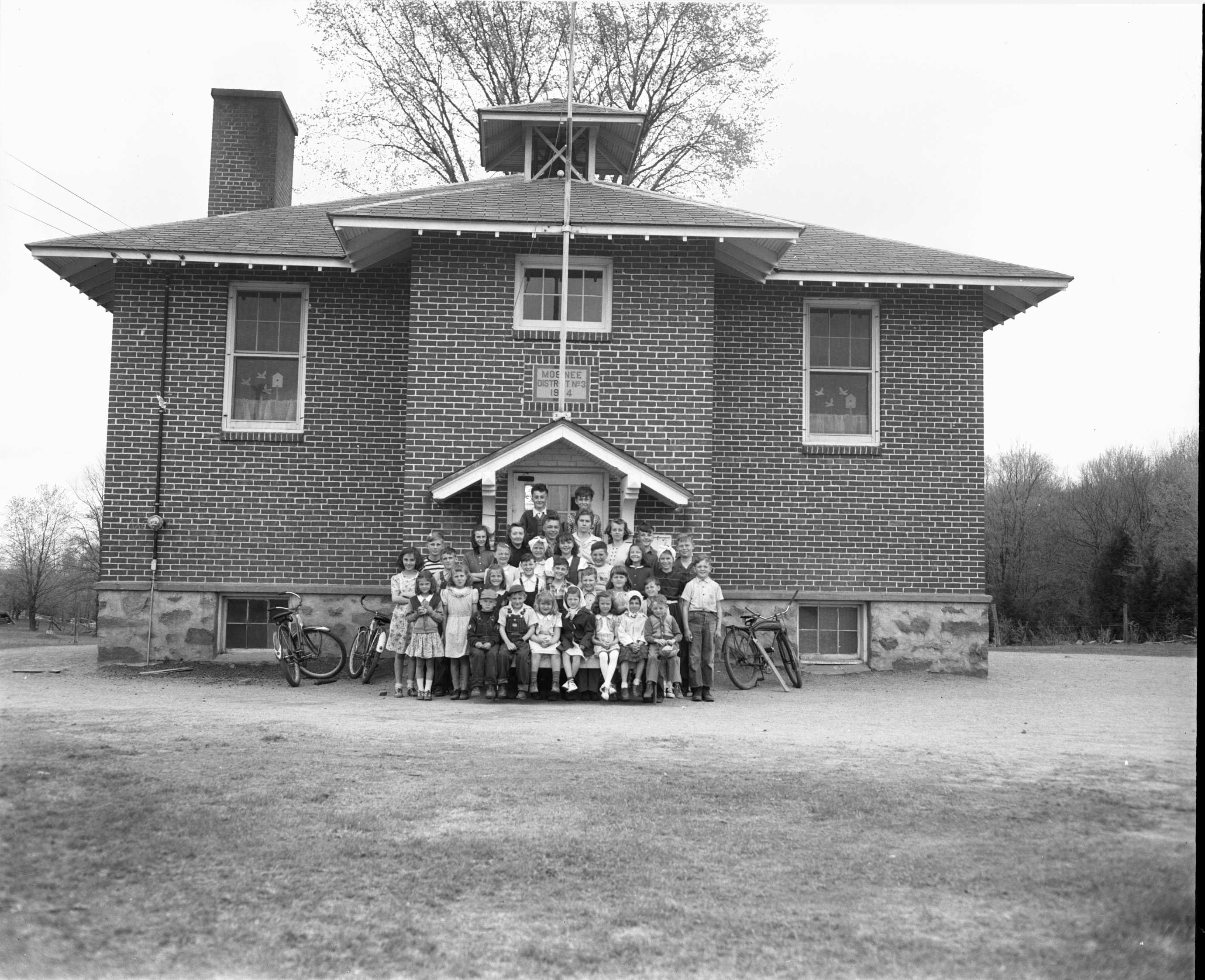Search our Places Database
Mosinee, Township of
Return To List of Locations | Back to Search
For more information on this location, please contact our research library.

Author:
Mary Moltzan
Location:
T. 27 N. - R. 6 E. & part 7 E., west of the Wisconsin River
Formallized:
November,1856
Background:
Population: 1905-454 plus Village of Mosinee-530, 2000-2,146 plus City of Mosinee-4063.
Originally, the area was inhabited by Menominee & Potowatomie Indians who farmed and hunted. The Indians were removed to reservations in 1848, 1853 and 1854.
Its area covered Townships 26 & 27 N. from the except the Village of Mosinee and immediate neighborhood.
Post Office Established:
March 18, 1852
First Postmaster:
Truman Keeler
About The Post Office:
First named Little Bull Falls. Name changed to Mosinee and P.O. moved to Mosinee in 1857. The P.O. is still open and located in section 29.
The Village of Moon also operated a post office - established December 2, 1891 in Section 33 of Mosinee Township. It was discontinued in 1908 or 1909. The postmaster was Zimri Moon.
Railroad:
See City of Mosinee.
Churches:
See City of Mosinee and Moon settlement
Schools:
1. School No. 4 - Boulevard- Built in 1916 with wings added in 1931. Located in section 25 of Mosinee Township, it became part of the Mosinee School District in 1957.
2. A school was located in Section 6 of the township.
3. School No. 3 - Oleson- located in Section 3 of the township.According to the Wausau Daily Herald, the school was named for a a local farmer in the vicinity who boarded many of the school's early teachers.
4. School No. 2 - Rocky Ridge - Located in Section 14, it became part of the Mosinee School District in 1960.
Also see City of Mosinee - Schools
Business:
See City of Mosinee
Industry:
See City of Mosinee and Moon settlement
Farming:
The first settlers came to the area right after 1850. Many bought their land sight unseen and coming with relatives and neighbors thought their lands would be adjoining. They found themselves widely scattered in a dense wilderness where the land was ill-suited for the type of farming they were used to. To survive, many worked at logging and in the sawmills until they could clear the land.

